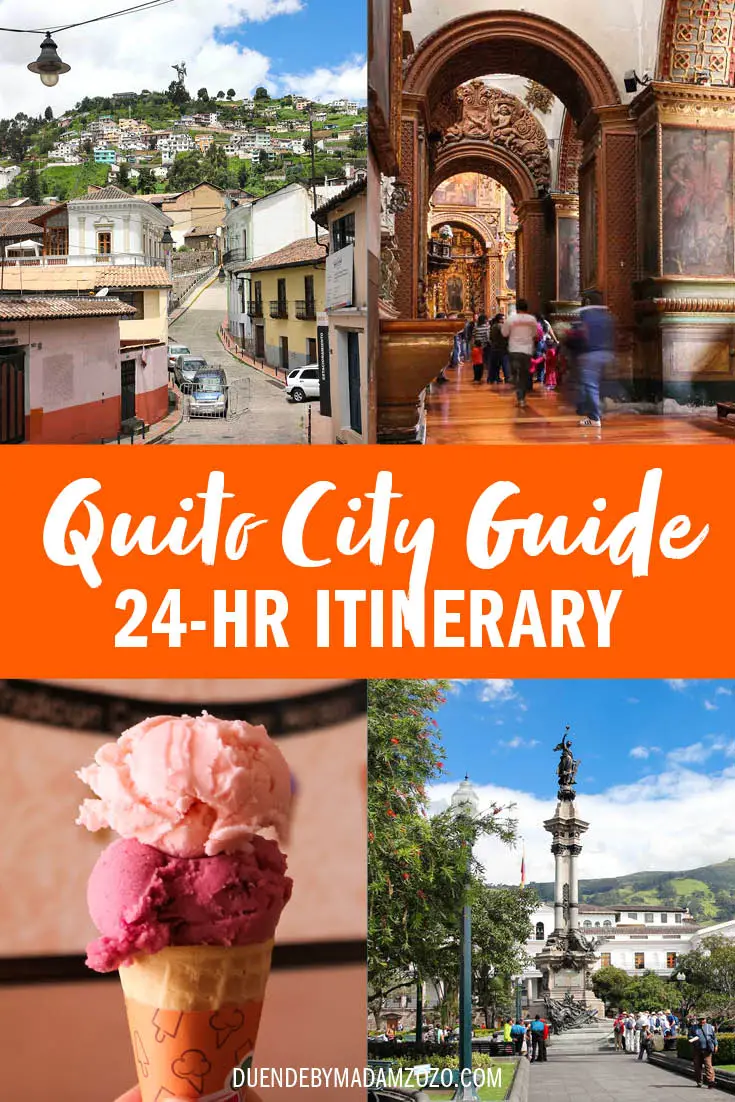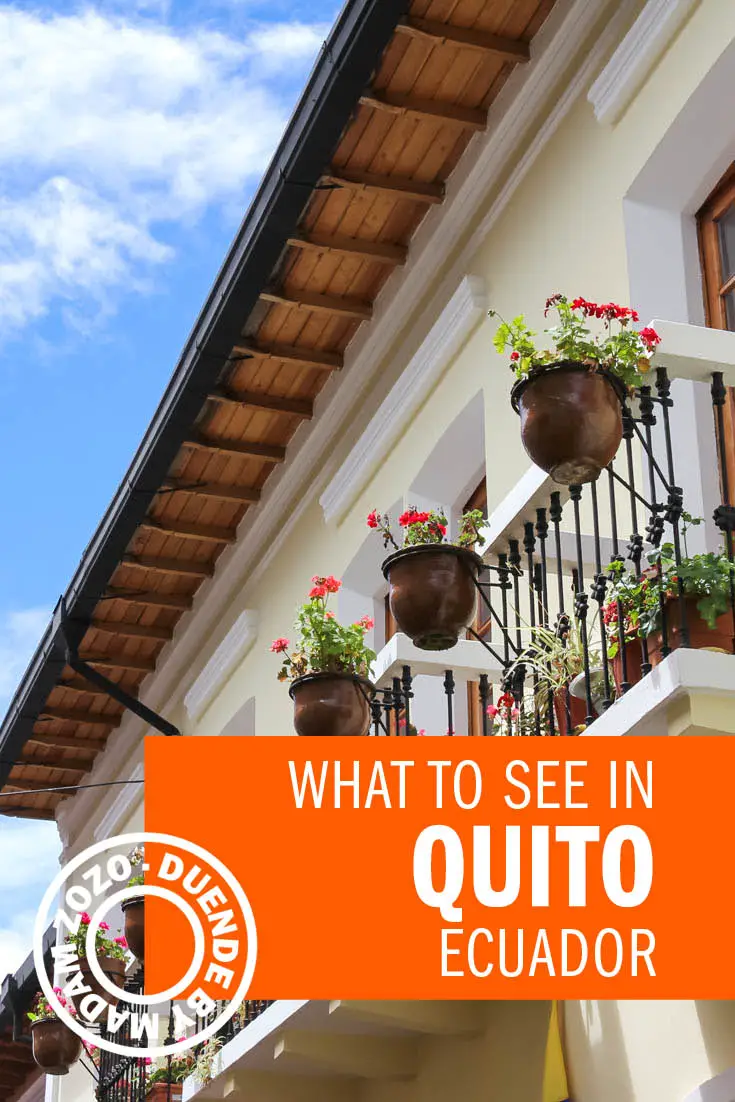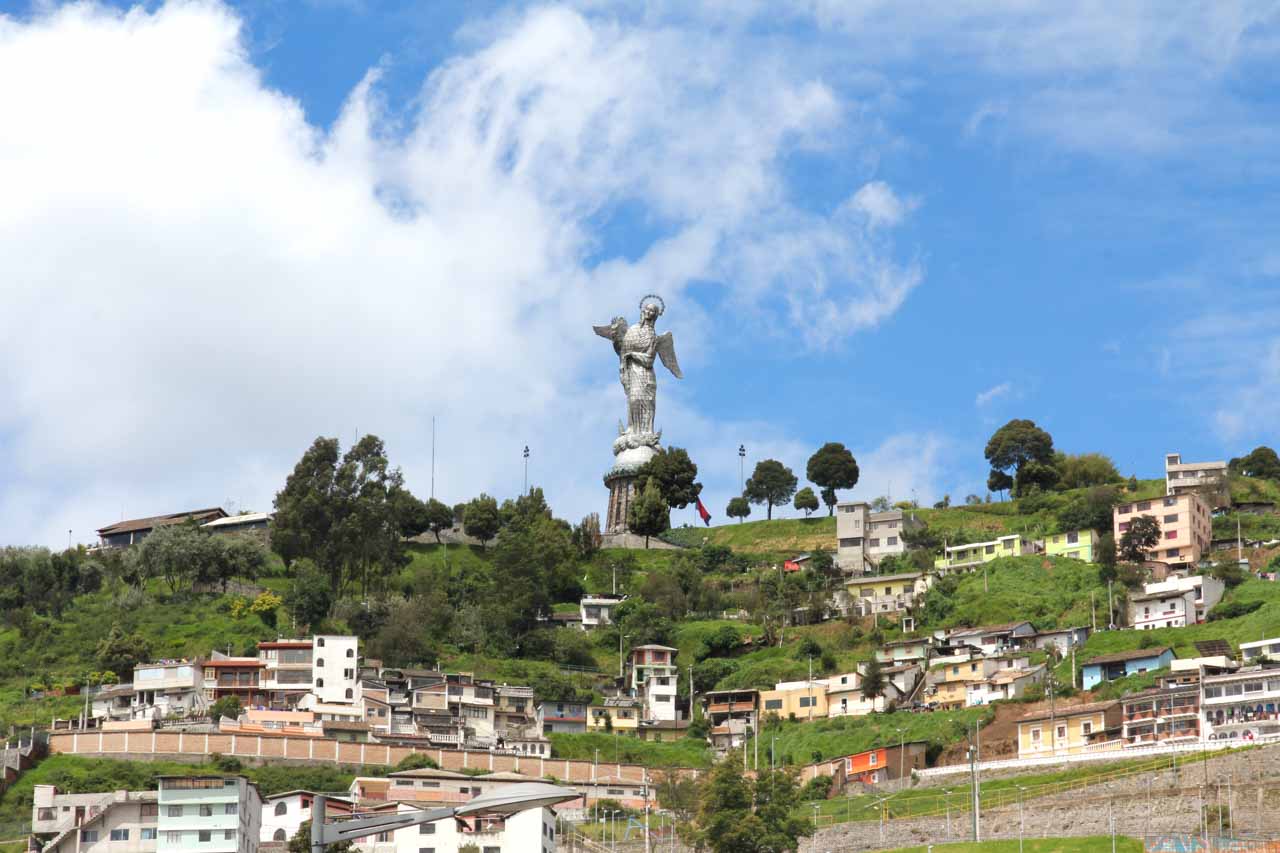It took me a mere 24-hours to fall in love with the Ciudad de los Cielos (City of the Heavens). I wish I had more time to spend exploring the Ecuadorian capital, that flies low under the tourist radar and falls off most bucket lists. Like many travellers, for me Quito was a gateway to the Galapagos Islands. I had no idea I would become so smitten with the city and intrigued by broader Ecuador during my short stopover. I can’t wait to return! In the meantime here are some of my favourite moments in art, architecture, artisans and ice cream from my 24 hours in Quito.
Disclosure: I may earn compensation from the purchase of any product or service linked on this website, at no extra cost to you. I only link to products I use and love, therefore feel comfortable recommending.
History and architecture
Quito takes its name from the Quitus, a pre-Incan people that once inhabited the area. The Quitus were absorbed into the Incan empire, before it was crushed by 16th-century Spanish conquistadors. The Spanish invaders established “modern-day” Quito upon the ruins of the former Incan city. They benefitted from the Incan road that linked the town with Cusco, Peru.
The majority of Quito’s colonial architecture is of Baroque styling, including the monasteries of San Francisco and Santo Domingo, and the Church and Jesuit College of La Compañía. Several neoclassical and beaux-arts structures also remain from the early republican period of Ecuador.
Quito’s historic district was among UNESCO’s very first 12 Heritage-Listed sites, declared in 1978. It was also the first-ever World Cultural Heritage Site alongside Krakow in Poland. Despite a number of earthquakes, Quito remains “the best-preserved, least altered historic centre in Latin America,” according to UNESCO.


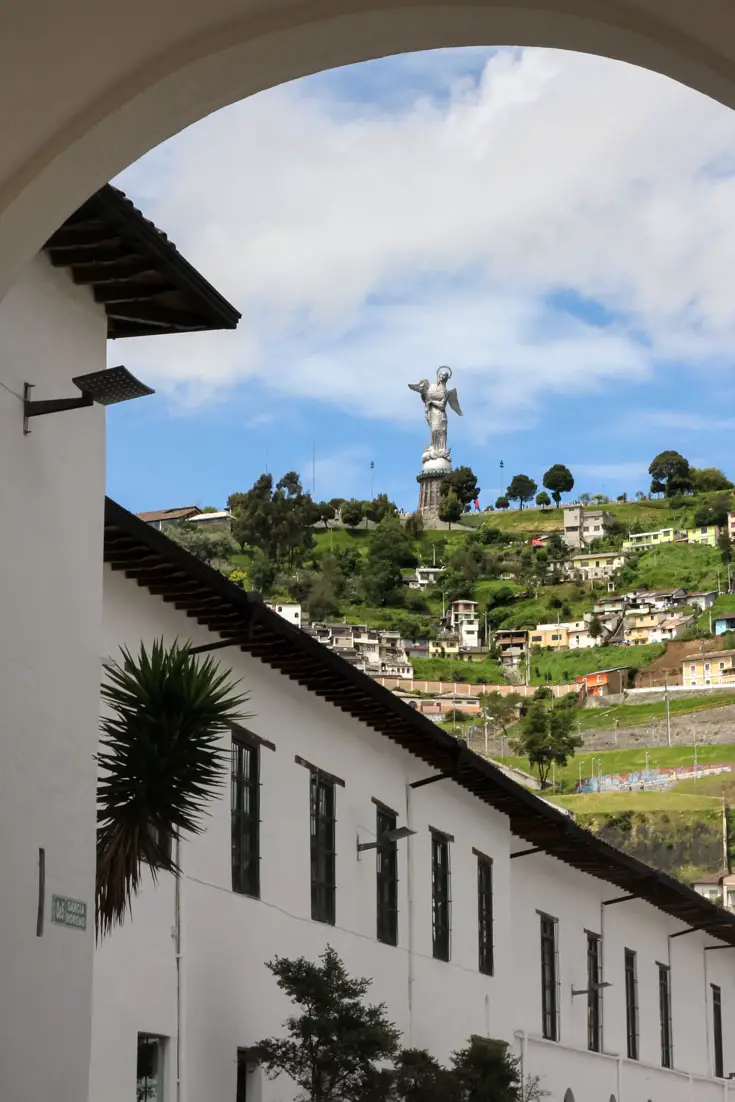
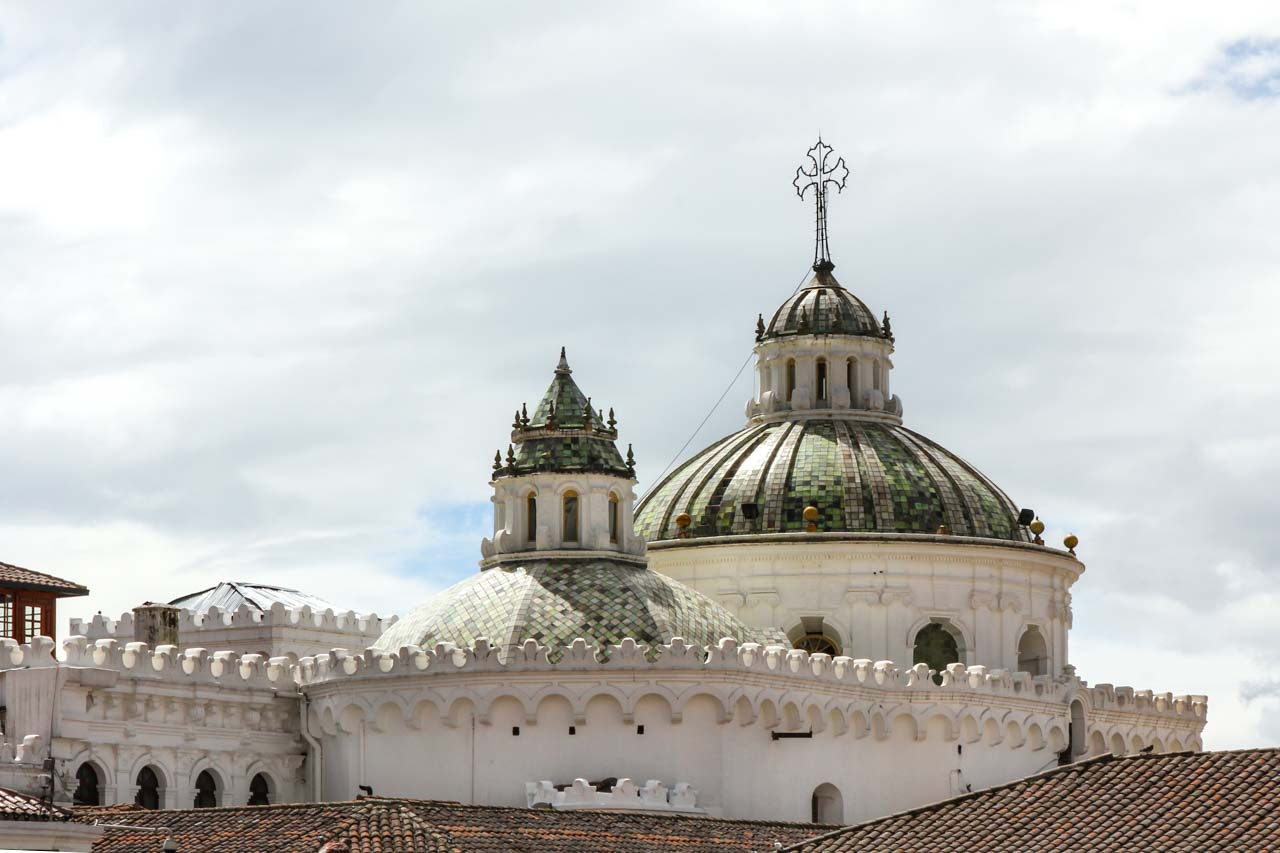

Art
The Escuela Quiteña (Quito School of Art) is a fusion of many cultural influences that have come together in Ecuador throughout history. These include Spanish, Italian, Moorish, Flemish and indigenous art.
When the Spanish conquered the region, they set about converting the indigenous population to Catholicism. Art and architecture became an important part of the education and conversion process. Spanish teachers trained locals to produce religious paintings in the popular European style. To this, the students brought their own symbolism and influence. Quito was renowned for the quality of sculpture and polychrome carvings produced there. Paintings were also of a very high standard.
There are dozens of galleries in Quito specialising in various forms and movements of art. Due to our brief visit, timed over the Easter holidays, we only got to experience the Museo de Arte Colonial (Museum of Colonial Art). The gallery, set in a 17th-century mansion, features paintings, sculpture and furniture from the Quito School of Art between the 16th– and 18th-centuries. This small museum is a must visit for art lovers. All information is in Spanish, so it pays to do a little research before you go or just enjoy the visual experience.




Artisan crafts and souvenir shopping
Morales Street, commonly referred to as “La Ronda” is home to some of Quito’s finest artisan workshops and storefronts. La Ronda is on 24-hour tourist rotation, with artisan workshop visits during the day, before the restaurants and bars open for the evening. A late morning stroll down La Ronda will reveal its long association with folk arts and crafts. It was also the 20th-century became home to poets, musicians and politicians significant in Ecuador’s history.
The bohemian meeting place degraded into dilapidated buildings inhabited by drug dealers and sex workers by the mid-1900s. Fortunately, in the early 2000s the Ecuadorian government decided to give it a makeover and restored the street to its former glory. Artisans were invited to compete for subsidised rent in the vacant stores and workshops. In return, they open 10am-5pm each day allowing visitors to explore traditional crafts and speak with skilled artisans. You will find craftspeople specialising in wood carving, metalwork, millinery, candle making, jewellery and sculpture.
What I loved most about this place was the absence of pushy sales tactics, just artisans passionate about their crafts. They were willing to share their art by answering my dozens of questions and allowing me to photograph their workspaces. If folk art isn’t your thing, there are artisans in honey, chocolate and ice cream among other gastronomical delights.
NOTE: Don’t forget that Ecuador is the home of the Panama hat (not Panama), and there are reputable brands you with shops in Quito where you can shop for a fashion classic of your own.

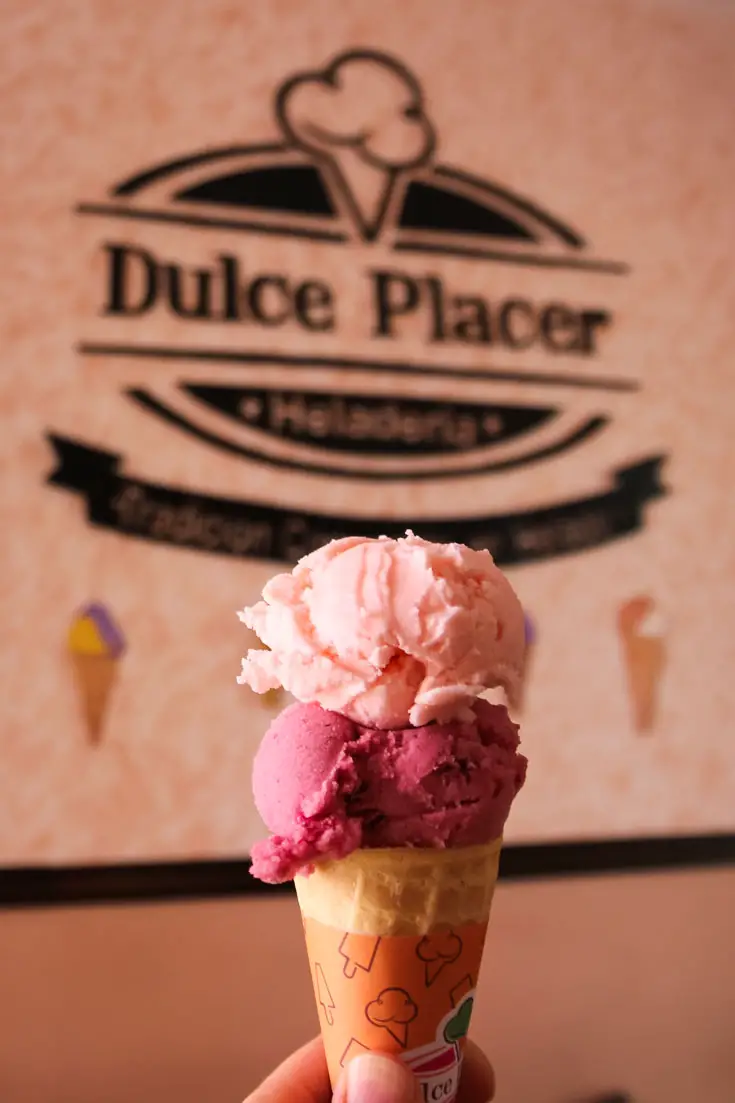



The equator – day trip from Quito
Quito is the closest capital city to the equator. The city’s central square is located about 25-km (16-mi) south of the equator; the city’s suburbs sprawl to within approximately 1-km (0.62-mi) of zero latitude.
There are two places most people visit the equator: A grand, government built monument – Mitadad del Mundo “Middle of the Earth”- which was built before modern-day GPS and therefore lacks geographical accuracy. The second, Museo Solar Inti-Nan, is a privately owned museum that used GPS to locate a more precise position along the Equator.
Though my first 24-hours in Quito felt like it was in fast forward, the Ciudad de los Cielos certainly made an indelible impression. The people were very friendly. Everyone down to our airport taxi driver seemed genuinely concerned that we enjoyed our time their hometown. I can’t wait to explore more of the city and greater Ecuador. It’s time to put a map pin in Quito, and stop simply passing through. There is so much to miss if we don’t!
For those travelling through Quito on their way to the Galapagos Islands, see my advice on planning a trip here to this incredible archipelago here.
Peace, love and inspiring travel,
Madam ZoZo

